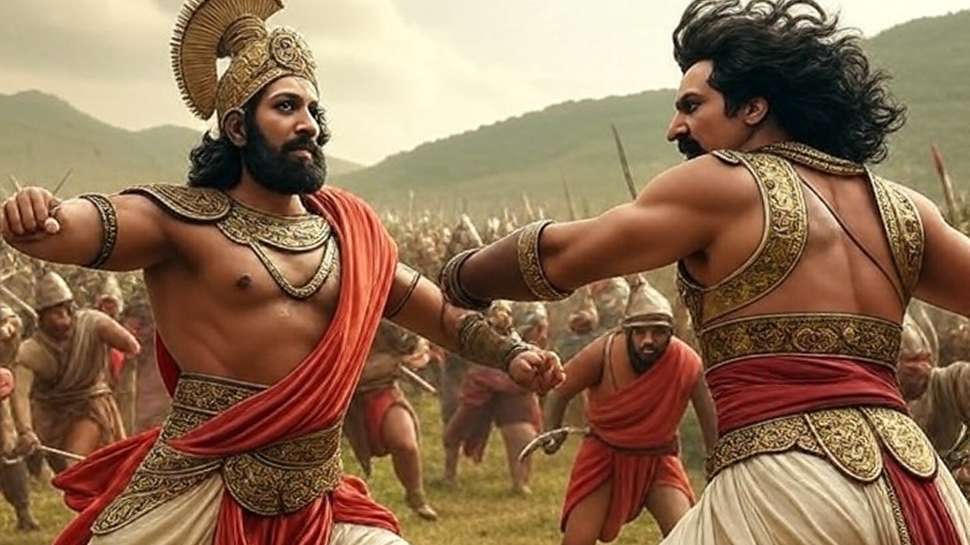Forget Mughals, Meet India's First Emperor Who Defeated Alexander's General, Chanakya Was His Advisor, Ruled For...Abdicated Throne To Adopt THIS Religion
Long before the mighty Mughals or the British Raj ever set foot in India, a true pioneer emerged, forging the subcontinent's very first pan-Indian empire. This visionary leader was Chandragupta Maurya, and he didn't just conquer vast lands; he laid the groundwork for centralized governance in a way no one had before. His journey from humble beginnings to becoming an emperor is a captivating tale of shrewd strategy, unyielding ambition, and a revolution that reshaped ancient Indian history. He even managed to defeat Seleucus I, one of Alexander the Great's own generals, expanding his empire further west. Chandragupta Maurya ruled for approximately 24 years, from c. 321 BCE to c. 297 BCE.
A Humble Start

Chandragupta Maurya is believed to have been born around 340 BCE, from a modest background – perhaps from the Mura tribe or a lower Kshatriya clan. Imagine a young man, seemingly ordinary, being discovered and mentored by someone as brilliant as Chanakya (Kautilya), a political strategist and scholar from the ancient university of Takshashila. Chanakya saw something special in Chandragupta, recognizing his potential to challenge the deeply unpopular and corrupt Nanda dynasty, and ultimately, to unite India under one banner. (Representative AI Image)
Overthrowing the Nandas
)
The Nanda dynasty, then ruling Magadha, was incredibly wealthy and militarily powerful. Yet, their reign was met with widespread public dissatisfaction. Under Chanakya's expert guidance, Chandragupta raised an army and successfully led a rebellion against Dhana Nanda, the last Nanda ruler. This pivotal victory, around 321 BCE, wasn't just a change in leadership; it marked the birth of the Maurya Empire and the dawn of Chandragupta’s imperial reign. (Representative AI Image)
Forging an Empire
)
Once in power, Chandragupta wasted no time in consolidating and expanding his new empire. His administration, heavily influenced by Chanakya’s insightful Arthashastra, focused on robust governance, efficient taxation, and ensuring internal security. He established Pataliputra (modern Patna) as his capital and steadily brought vast swathes of land under his control, including regions in present-day Punjab, Gujarat, Bengal, and the Deccan. His empire quickly became one of the largest in Indian history at that time. (Representative AI Image)
Facing Alexander's Legacy
)
One of Chandragupta's most remarkable feats was his engagement with the Greek successors of Alexander the Great, particularly Seleucus I Nicator, who held sway over northwestern India. Around 305 BCE, Chandragupta decisively defeated Seleucus in battle. This wasn't just a military victory; it forced Seleucus to cede significant territories in exchange for a marriage alliance and a staggering 500 war elephants. This triumph not only extended Mauryan rule into Afghanistan and Balochistan but also brought Chandragupta international recognition, cementing his empire's standing on the world stage. (Representative AI Image)
Lasting Legacy Of Governance
)
Chandragupta's reign was groundbreaking because it marked the first time India experienced a truly centralized imperial administration. His government was meticulously structured, with various ministries dedicated to finance, war, agriculture, and internal affairs. He prioritized the development of crucial infrastructure like roads, trade routes, and irrigation systems. The Mauryan legal and political framework served as a powerful precedent for future Indian empires, proving that his rule was about much more than just conquest – it was about building a stable, sustainable empire. (Representative AI Image)
Spiritual Journey
)
In a truly remarkable turn of events later in his life, Chandragupta chose to abdicate his throne in favor of his son, Bindusara. He then embarked on a spiritual journey, becoming a devoted follower of Jainism. According to Jain tradition, he traveled south and spent his final years in Karnataka as an ascetic, ultimately attaining sallekhana (the ritual practice of fasting until death). This profound spiritual transformation beautifully reflects the deep philosophical currents of ancient Indian civilization, where even powerful emperors sought inner liberation after achieving immense worldly success. (Representative AI Image)
Trending Photos



)
)
)
)
)
